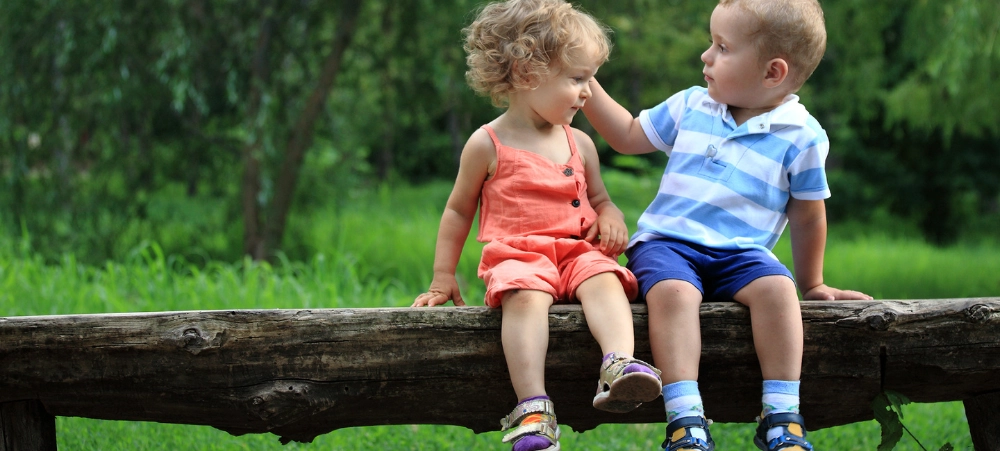In a world where kindness and compassion can make a profound difference, teaching empathy to children is one of the greatest gifts parents can offer. Empathy—the ability to understand and share the feelings of others—plays a crucial role in building strong relationships, resolving conflicts, and fostering a sense of community. Raising empathetic children doesn’t happen overnight; it’s a process that requires intentional effort, guidance, and modelling. Here’s how you can nurture empathy in your child and help them grow into kind, compassionate individuals.
Why Empathy Matters
Empathy is the foundation of emotional intelligence and is essential for:
- Healthy Relationships: Empathy helps children connect with others on a deeper level, forming strong, meaningful bonds.
- Conflict Resolution: Understanding another’s perspective can de-escalate conflicts and encourage peaceful solutions.
- Social Responsibility: Empathetic individuals are more likely to help others and contribute positively to their communities.
Teaching empathy equips children with skills they’ll use throughout their lives, both personally and professionally.
1. Model Empathy in Everyday Life
Children learn by watching their parents and caregivers. To raise empathetic kids, demonstrate empathy in your own interactions:
- Be Kind: Treat others with respect and compassion, whether it’s a neighbour, a server at a restaurant, or a family member.
- Acknowledge Emotions: When someone shares a problem or frustration, listen actively and validate their feelings.
- Show Generosity: Volunteer, donate, or help someone in need, and involve your child in these acts of kindness.
2. Teach Emotional Awareness
Empathy begins with understanding emotions—both their own and others’. Help your child identify and express their feelings:
- Name Emotions: Use phrases like, “You seem upset,” or “Are you feeling excited?” to help them label their emotions.
- Read Books About Feelings: Stories with characters facing challenges can prompt discussions about emotions and how to handle them.
- Practice Reflective Listening: Repeat what your child says to show you understand. For example, “You’re sad because your friend couldn’t come over today.”
3. Encourage Perspective-Taking
Empathy involves seeing the world through someone else’s eyes. Teach your child to consider how others might feel:
- Ask Questions: When conflicts arise, ask, “How do you think that made your friend feel?”
- Discuss Different Perspectives: Talk about the feelings and motivations of characters in books, movies, or real-life situations.
- Role-Playing: Use pretend play to explore how different people might feel in various scenarios.
4. Promote Acts of Kindness
Simple acts of kindness can cultivate empathy and compassion. Encourage your child to think of ways to help others:
- Random Acts of Kindness: Suggest small gestures like sharing a snack, helping a sibling, or drawing a picture for a friend.
- Family Service Projects: Participate in community activities like donating to a food bank or cleaning up a park.
- Gratitude Practice: Discuss things your family is thankful for and how you can give back to others.
5. Use Teachable Moments
Everyday situations provide opportunities to talk about empathy and kindness:
- When Someone is Upset: If your child sees someone crying or angry, ask them why they think the person feels that way and what they could do to help.
- After a Conflict: Discuss how everyone involved in a disagreement felt and how they can respond more empathetically next time.
- Celebrate Empathy: When your child shows empathy, praise their effort. For example, “It was so kind of you to share your toy when your friend was upset.”
6. Limit Exposure to Negative Influences
Be mindful of the messages your child receives through media and peer interactions:
- Choose Positive Media: Opt for books, shows, and games that promote kindness and cooperation.
- Discuss Negative Behaviours: If your child witnesses unkind behaviour, talk about why it’s hurtful and how to respond empathetically.
- Encourage Supportive Friendships: Guide your child toward relationships with peers who value kindness and respect.
7. Practice Patience and Understanding
Empathy is a skill that develops over time. Younger children may struggle to grasp others’ emotions, but consistent teaching and modelling will help them improve:
- Be Patient: If your child doesn’t respond empathetically, gently guide them toward understanding.
- Celebrate Growth: Acknowledge progress, even if it’s small, to reinforce positive behaviour.
Empathy in Action: Everyday Examples
- At Home: Teach siblings to consider each other’s feelings during disagreements and encourage them to work together.
- At School: Encourage your child to include classmates who may feel left out or help peers struggling with assignments.
- In the Community: Suggest ways to show empathy, like helping an elderly neighbour or comforting a friend who is sad.
Final Thoughts
Raising empathetic children is an ongoing process that involves modelling kindness, teaching emotional awareness, and encouraging perspective-taking. By creating an environment that values empathy and compassion, you’re helping your child develop the tools they need to build meaningful relationships and make a positive impact in the world.
Remember, every small act of kindness contributes to raising a generation of thoughtful, compassionate individuals. Together, we can make the world a kinder place—one empathetic child at a time.
We understand that there are many aspects that encompass a Mother, Father or Child and strive toward providing resources and services that accommodates this.
Our content is aimed to inform and educate families on issues starting from pregnancy through to the challenges of the teen-age years.
- Tiny Toons Looniversity Returns: Meet the Voice Behind Plucky and Hamton! - December 12, 2025
- From Pain to Possibility: Panado®’s New Marketing Campaign, Highlights The Joy Of Pain Relief - December 10, 2025
- Feeding Unicorns by Jeni-Anne Campbell: A bold new book for business leaders who care - December 9, 2025






2 thoughts on “Teaching Empathy: Raising Kind and Compassionate Kids”
Well written and informative article, thank you.
By teaching empathy to kids, we can help them develop essential life skills, promote positive social change, and create a more compassionate and inclusive world.reading this article has given me valuable information to rise my daughters